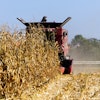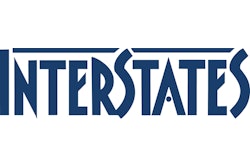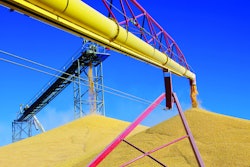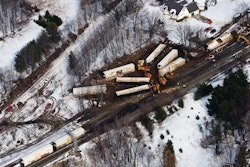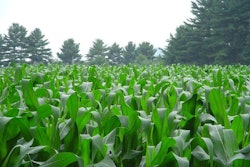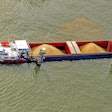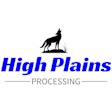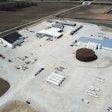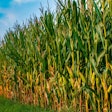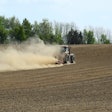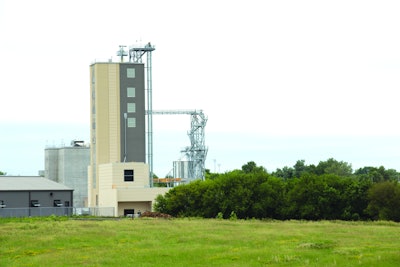
Today many students studying for a career in the feed industry are experiencing real-world applications in their educational setting thanks to cooperation between educational facilities and industry suppliers.
Kansas State University, Auburn University and Cal Poly are all using Interstates’ I-Control to control, track and manage their feed milling operations from receiving to batching, to pelleting all the way through load out.
I-Control is built around an SQL database allowing facilities to gather data for reporting and quality assurance. As facilities conduct research to make feed production more efficient and economical, data recorded by the system is used to evaluate variables such as pelleting temperatures and process or mixing times. Using the same system, each university has customized their own teaching applications for I-Control.
Auburn University
In the fall of 2012, Auburn University opened a smaller scale teaching mill in order for students to visualize all processes within a single building. The equipment at the Auburn facility was built on skids that were constructed at a prefabrication facility in Minnesota. All equipment was set in place in the skids and when complete, the skids were disassembled and shipped to the site at Auburn. Prefabricating the skids allowed building construction to happen simultaneously as equipment was being installed.
One of the unique features of this facility is implementation of an adjustable stand that supports an HMI work station directly on the operating floor of the mill. The movable arm allows larger student groups to access the I-Control system for a virtual view while simultaneously witnessing what is happening physically in front of them on the plant floor. Instructors and students at Auburn also use mobile technology to remotely monitor facility operations.
"We can connect an iPad to a projector in any classroom and show students what’s going on at the feed mill," says Mitchell Pate, director of poultry research, Auburn University. "We can watch feed being made right from the iPad. Through I-Control, we can change settings and do different things using the system. It’s the same kind of technology being used in the industry and having access to it in a learning environment provides students with real experience that will benefit them as they launch their career."
Cal Poly
Cal Poly, located in San Luis Obispo, CA, concentrates heavily on feed research, while also providing feed for all the university’s livestock. The mill is organized to provide small batch production for these purposes. Also featuring a prefabricated modular design built on skids, it is a full-scale feed mill.
Cal Poly incorporates a “learn by doing” motto in their program. I-Control provides data that researchers need to track information to validate their research. Carl Whisenant, Animal Nutrition Center manager, Cal Poly, says, “Using a visual control system provides clarity of critical feed processing parameters relevant to nutritional formulas. It is also beneficial to clearly relate HACCP concepts to the mechanical equipment processes and critical control points.”
In support of university research, I-Control allows for a large amount of data to be collected in the feed production process. “Batching log reports from I-Control clearly compares all major ingredients and hand add quantities to the theoretical research formula quantities to maintain an acceptable tolerance of variation and not invalidate the research feed,” says Whisenant. “Using the data, students learn to read and interpret production reports as they will when they are managing their own mill operations. They see how technology makes it possible to create a reliable track and trace process, which will be increasingly important to the industry.”
Kansas State University
In 2013, Kansas State University, the only university to offer a 4-year degree in Feed Science, opened the O.H. Kruse Feed Technology Innovation Center. It is constructed, equipped, and operated as a full scale production/commercial feed mill providing students the opportunity to work with the latest technology in a university setting. With both lecture and lab opportunities, students operate the equipment and use the I-Control system for grinding, mixing and pelleting feed just as they would in a commercial environment.
“We are preparing our students for their careers using equipment as they would see in the field,” says Dr. Charles Stark, Kansas State University. “They are learning by using state-of-the-art automation and equipment. Many of the facilities where they will work after graduation are older sites using older technology. Because of their university experience, they will have an understanding of what could be possible based on their exposure to newer technology.”
Ready workforce
Each university implemented their I-Control system as needed to operate their facility for research, teaching and production purposes. “What benefits students most is that they enter the work force already familiar with a commercial system,” says Ben Langstraat, lead control systems analyst, Interstates Control Systems. “Their experiences from college put them ahead of others who must otherwise spend part of their first year learning on the job.”
Because their chosen university selected equipment and software that applies directly to the industry, graduates have a head start and see the value of the technology available in their industry. Using commercial solutions is bridging the gap between the classroom and the control room and providing real opportunities for students, better preparing them for their careers. They are able to immediately add value to their employer with their technology experience.
Lisa Johnson is the director of marketing and communications for Interstates Companies, a certified member of the Control System Integrators Association (CSIA).

